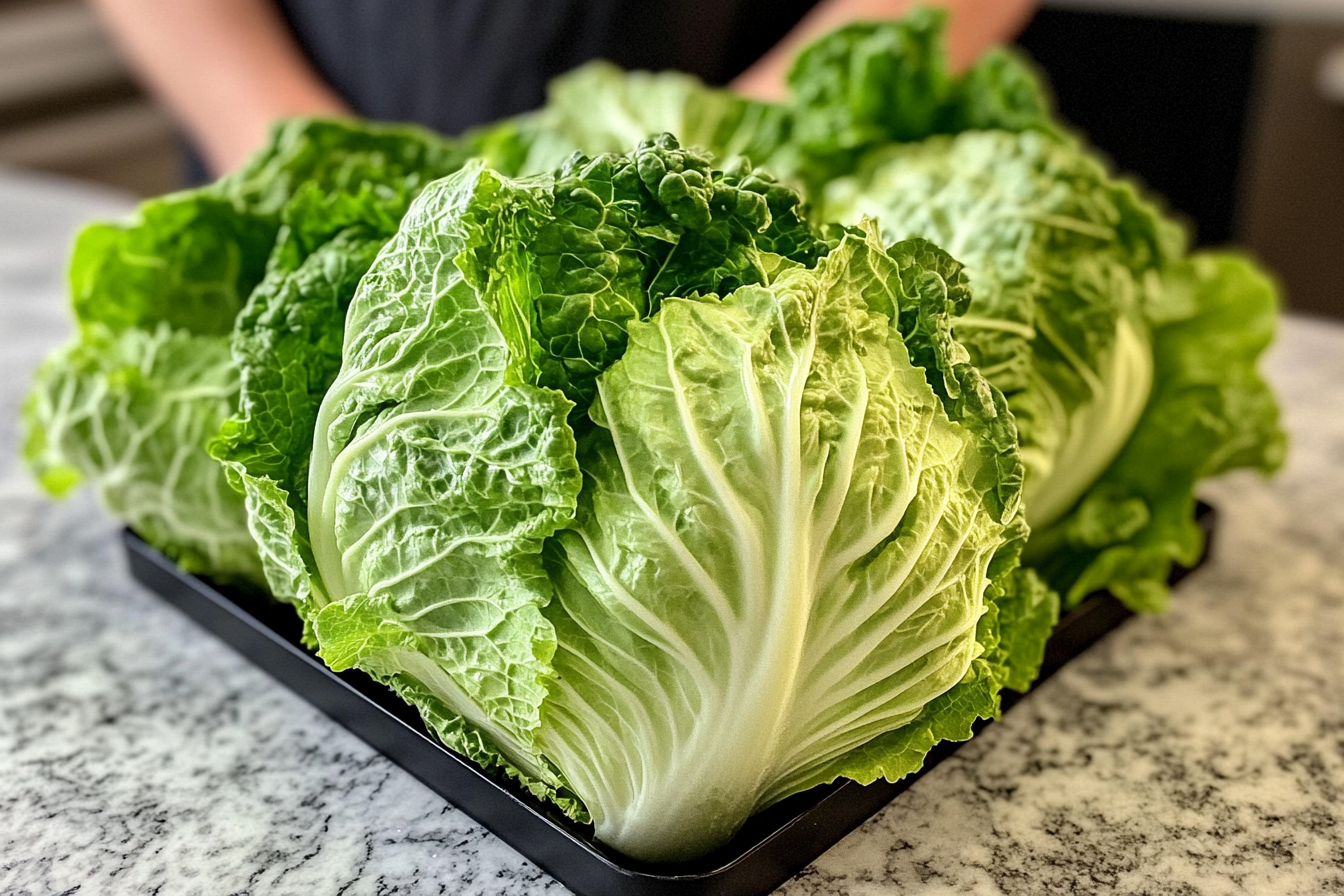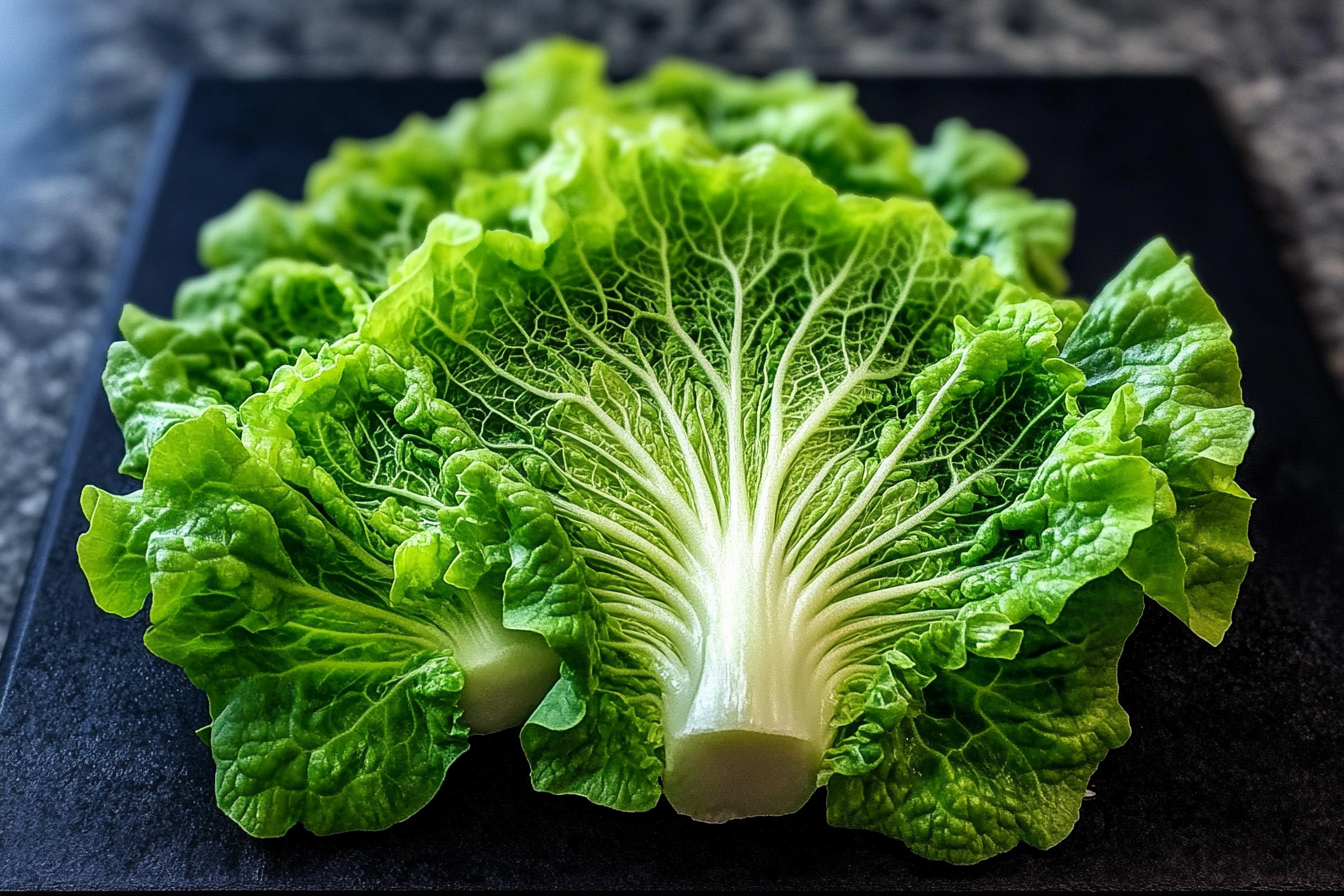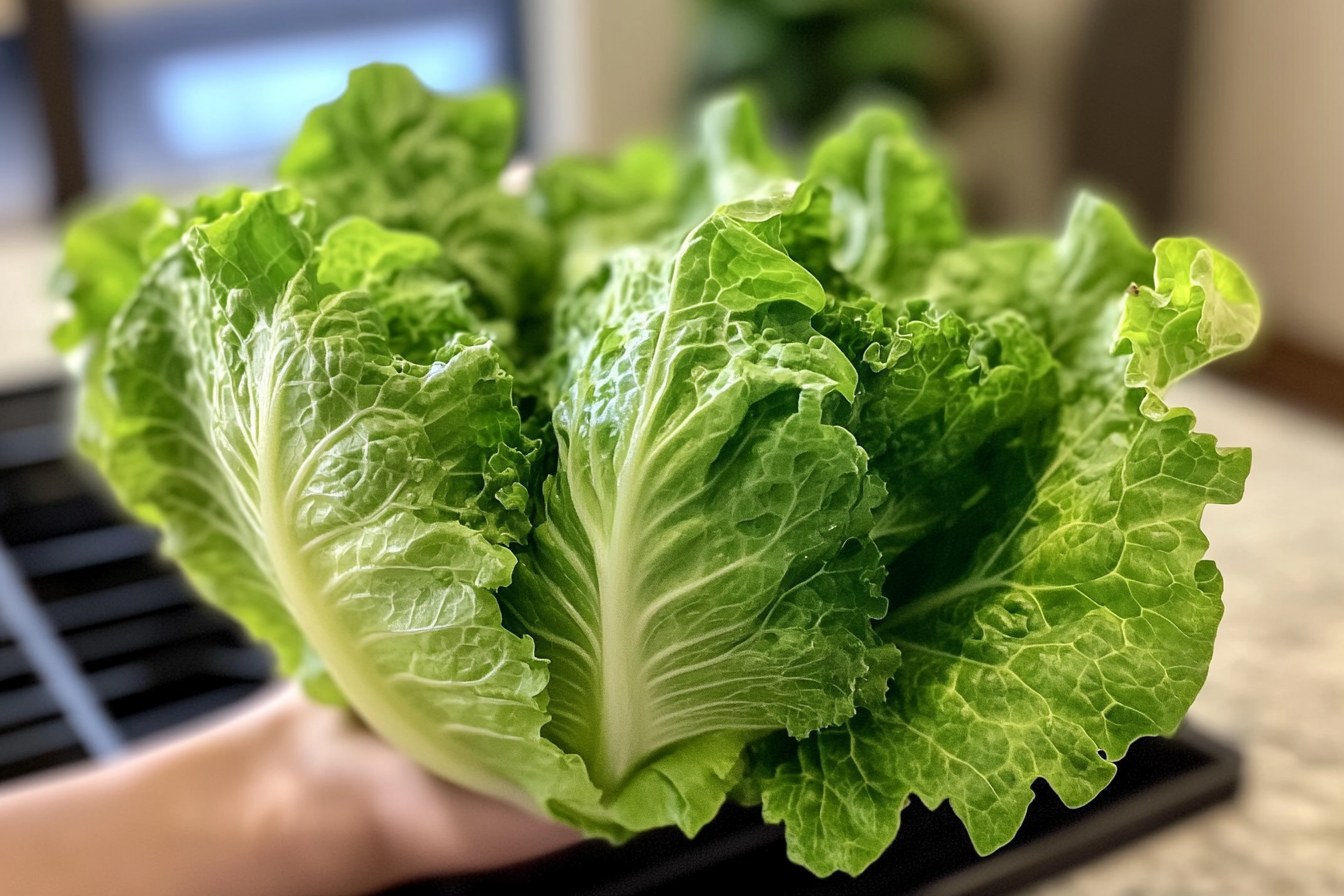What’s Another Name for Escarole? Escarole is a leafy green that many people know by name but often overlook or confuse with other greens. It may look like lettuce, spinach, or kale at first glance, but escarole belongs to the chicory family and has a slightly bitter flavor that makes it stand out. Depending on the region and cuisine, escarole goes by various names. This versatile green is prized in the kitchen for its culinary adaptability. In this article, we’ll explore other names for escarole, its substitutes, nutritional benefits, and how to incorporate it into your meals. You’ll also find answers to common questions about escarole and why you should consider adding it to your cooking routine.
What is Escarole?
Escarole, part of the chicory family, features broad, wavy-edged leaves that range from dark green on the outside to lighter, more tender leaves on the inside. It’s easy to confuse it with greens like spinach, lettuce, or kale, but escarole has a distinct flavor profile. The slight bitterness of escarole pairs well with rich, savory, or sweet ingredients that help balance the sharpness.
In Mediterranean cuisine, especially Italian dishes, escarole frequently appears in soups like Italian wedding soup, salads, and sautéed recipes. Its unique taste and texture make it a beloved ingredient in kitchens worldwide. Escarole often provides a nutritious and flavorful base for dishes, complementing proteins, legumes, and other vegetables.
If you’re looking for a recipe with escarole, try this hearty and nutritious Escarole and Cannellini Beans Recipe. It showcases the versatility of this leafy green.
Common Names for Escarole
Though “escarole” is its most common name, different regions refer to this leafy green by various terms. These names often reflect local culinary traditions and languages. Here are some common names for escarole:
- Broad-leaved endive: Commonly used in European markets.
- Bavarian endive: Popular in German-speaking regions.
- Chicory escarole: Refers to its place in the chicory family.
- Cichorium endivia: Its scientific name.
- Salad greens: A broad term used in some countries.
Knowing these alternate names becomes important when shopping for escarole in different regions or using recipes from other parts of the world. Additionally, cultural variations in how people classify and use escarole can lead to exciting culinary discoveries. By understanding its many names, you can experiment with escarole in diverse contexts.
If you want to explore more about the differences between escarole and other chicories, check out this informative article on What Is Escarole. It offers insight into its relatives within the chicory family and how people use them in cooking.
The History of Escarole
Escarole has an interesting history, as people in Mediterranean regions have grown it for centuries. The leafy green thrived in the temperate climates of the Mediterranean basin, and ancient Romans incorporated it into their diets. They valued chicory plants, including escarole, for their medicinal properties, especially their ability to aid digestion and support liver function.
Over time, escarole spread throughout Europe and eventually made its way to North America. Italian immigrants brought their culinary traditions to the United States, where escarole became popular in American kitchens. As more people experimented with it, escarole’s use extended beyond traditional salads and soups.
Escarole in Different Cuisines
Escarole’s slightly bitter taste and unique texture make it a favorite in many types of cuisine. Below are a few ways people around the world use this versatile green:
Italian Cuisine
In Italy, escarole often appears in minestra (soups), such as the well-known Italian wedding soup. Italians also enjoy sautéing escarole with garlic, olive oil, and chili flakes as a simple side dish. Escarole’s bitterness balances well with rich flavors like pancetta, sausage, or beans, making it a hearty addition to many Italian meals.
French Cuisine
In France, chefs often incorporate escarole into salades composées (composed salads), pairing it with ingredients like bacon, soft-boiled eggs, and croutons for a satisfying meal. French cooks also mix escarole with other bitter greens to create a variety of textures and flavors in salads.
Spanish and Latin American Cuisine
In Spanish and Latin American cooking, escarole frequently appears in soups and stews. Its sturdy texture holds up well during the cooking process, making it a favorite for hearty dishes like caldo gallego, a traditional Galician soup with greens, potatoes, and chorizo. In many Latin American dishes, escarole enhances chicken soups or stews.
Middle Eastern Cuisine
Middle Eastern dishes also feature bitter greens like escarole, especially in countries such as Lebanon and Syria. Escarole combines with sumac, lemon, and olive oil to create tangy salads that complement richer foods like lamb or falafel.
Differences Between Escarole and Other Greens
Although escarole is a leafy green, it differs from others such as spinach, kale, or endive. Here’s how escarole compares to popular greens:
Escarole vs. Endive
Escarole and endive both belong to the chicory family, but their appearance and flavor set them apart. Escarole’s broader leaves contrast with the narrower, curled leaves of endive. While escarole’s bitterness is pronounced, endive tastes sharper and more peppery.
Escarole vs. Spinach
Spinach’s sweeter, more delicate flavor sets it apart from the bitter taste of escarole. Escarole’s firmer leaves hold up well in soups and stews, while spinach tends to wilt more easily. In heartier dishes, escarole makes a good substitute for spinach when you need more structure.
Escarole vs. Kale
Kale is known for its tough, fibrous leaves, making it ideal for dishes that require a green with more body. Escarole, by contrast, is softer and less chewy, though it shares kale’s ability to stand up well in cooked dishes. Kale’s flavor is more earthy and mild compared to the bitterness of escarole.
Escarole vs. Frisée
Frisée, another member of the chicory family, has finer leaves and a more delicate flavor. Its curly, tender texture makes frisée perfect for raw salads, while escarole’s broader leaves make it more versatile for both raw and cooked dishes.
How to Store and Prepare Escarole
To enjoy the full flavor and nutritional benefits of escarole, you must store and prepare it correctly.
Storing Escarole
Store fresh escarole in the refrigerator, preferably in the vegetable crisper drawer. It can last up to a week if stored properly. Place escarole in a perforated plastic bag or loosely wrap it in a damp cloth to prevent the leaves from wilting. Avoid washing it until you’re ready to use it since excess moisture can cause the leaves to spoil faster.
Preparing Escarole
Before using escarole, rinse the leaves under cold water to remove any dirt or grit trapped between the layers. For salads or raw dishes, you can leave the leaves whole or tear them into smaller pieces. If you’re cooking escarole, cut the leaves into larger chunks to help them retain their structure during cooking.
Substitutes for Escarole
Though escarole has a unique flavor, several leafy greens can serve as substitutes if you cannot find it at your local store:
- Frisée: Frisée offers a similar bitterness and works well in salads and soups.
- Arugula: Arugula provides a peppery flavor rather than a bitter one but can still add a punch of flavor in dishes that call for escarole.
- Spinach: Spinach offers a milder flavor and works well in cooked dishes like soups and stews.
- Kale: Kale’s hearty texture and slightly earthy flavor make it a good option for substituting escarole in dishes where bitterness may overwhelm the other ingredients.
If you want more ideas for using substitutions, check out this guide on Escarole Substitutes, which covers a variety of greens that work well in different dishes.
How to Cook Escarole
You can prepare escarole in many ways, both raw and cooked. Here are a few popular methods for cooking escarole:
Escarole and Bean Soup
This classic Italian soup combines escarole’s bitterness with the creaminess of cannellini beans, garlic, and broth. It’s a simple, hearty dish that highlights escarole’s flavor without overpowering it. Add sausage or pancetta for extra richness.
Sautéed Escarole with Garlic
Sautéing escarole with garlic and olive oil is one of the easiest ways to cook this green. Garlic mellows out the bitterness, and a pinch of chili flakes adds a bit of heat. This dish makes an excellent side for grilled meats or fish.
Escarole Salad
For a quick salad, mix raw escarole with sweet ingredients like apples, raisins, or dried cranberries. A vinaigrette made with olive oil, lemon juice, and honey balances the bitterness of the leaves.
For more recipe ideas, check out the Health Benefits and Uses of Escarole to discover additional ways to cook with this versatile green.
Nutritional Benefits of Escarole
Escarole isn’t just delicious it’s packed with nutrients that support your overall health. Here are some key nutritional benefits of eating escarole:
- Rich in Vitamins: Escarole provides Vitamin A, Vitamin K, and folate, essential for maintaining healthy skin, bones, and immune function.
- High in Fiber: Escarole’s fiber content supports digestion and helps you feel full longer.
- Low in Calories: Escarole delivers plenty of nutrients while remaining low in calories, making it an excellent option for those trying to manage their weight.
- Antioxidants: The antioxidants in escarole help reduce inflammation and protect your cells from free radical damage.
Frequently Asked Questions (FAQs)
What can I substitute for escarole in soup?
Use kale, spinach, or arugula as substitutes in soups if escarole isn’t available. These greens provide similar texture and flavor, though the taste may vary slightly.
Is escarole the same as endive?
Escarole is a type of broad-leaved endive, but it differs from Belgian endive, which has narrower, more tightly packed leaves. Escarole is less bitter than Belgian endive and has a softer texture.
Can you eat escarole raw?
Yes, escarole works well in raw salads. In fact, its slightly bitter flavor pairs nicely with sweet or tangy ingredients, such as apples, raisins, or citrus dressings. Moreover, when combined with these contrasting flavors, escarole’s bitterness becomes balanced, creating a refreshing and flavorful dish. As a result, escarole is an excellent choice for salads that require both texture and a complex flavor profile.
Is escarole good for you?
Definitely! Escarole is rich in vitamins, minerals, and antioxidants, all of which contribute to better health. Its fiber content also promotes good digestion.
Why is escarole bitter?
Escarole belongs to the chicory family, known for its naturally bitter greens. The outer leaves taste more bitter, while the inner leaves are milder. Cooking can reduce the bitterness.
Where can I buy escarole?
Look for escarole in the leafy greens section of most grocery stores, often near the lettuce, kale, and spinach. You may also find it at local farmer’s markets or specialty stores.
Conclusion: What’s Another Name for Escarole?
Escarole is a versatile, nutritious leafy green that deserves a spot in your kitchen. Whether you add it to soups, sauté it with garlic, or toss it into a salad, escarole brings a unique flavor that complements a variety of dishes. By learning the other names for escarole, exploring its substitutes, and understanding its rich history, you can use this green in more creative ways.
For additional recipe ideas and to experience the full range of its health benefits, explore more about Escarole Health Benefits and Recipes.



